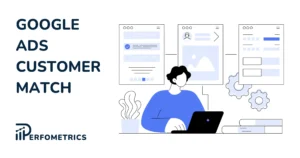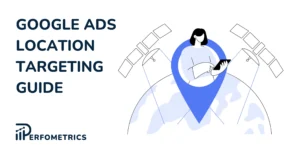Campaign Goals in Microsoft Ads – Necessary Foundation for Success

Setting clear and measurable campaign goals is crucial for the success of your Microsoft Ads campaigns. These goals act as a roadmap, guiding your advertising efforts and ensuring they are aligned with your overall business objectives.
This strategic approach not only provides direction and focus but also serves as a benchmark for evaluating the success of your advertising efforts, optimizing ad spend, and driving tangible results toward achieving your desired outcomes.
What is a Microsoft Ads Campaign Goal?
Microsoft Ads campaign goal is a specific, measurable target that you aim to achieve through your advertising efforts. It defines the desired outcome of your campaign, providing a clear roadmap for success.
Campaign goals can range from increasing website traffic and generating leads to boosting sales and enhancing brand awareness.
Types of Microsoft Ads Campaign Goals
Microsoft Ads offers a variety of advertising goals to cater to different business needs and marketing strategies. These goals are designed to help you target your campaigns effectively, whether you are looking to increase phone calls, foot traffic, online sales, or ad clicks.

| Campaign Goal | Explanation |
|---|---|
| Visits to my website | Drive traffic to your website to increase brand awareness and generate leads. |
| Visits to my local business location(s) | Attract customers to your physical store by promoting your address and directions. |
| Conversion in my website | Encourage visitors to take a desired action on your website, such as signing up for a newsletter. |
| Phone calls to my business | Increase inbound calls to your business by prominently displaying your phone number in your ads. |
| App installs | Promote your mobile app and encourage users to download and install it. |
| Sell products from your catalog | Display product ads directly from your inventory and enable online purchases. |
| Promote your apps and games | Showcase your apps and games to a wider audience and drive downloads. |
| Video views | Increase engagement with your video content by promoting it across Microsoft’s network. |
| Ad impressions | Maximize the visibility of your ads and reach a larger audience. |
Why Set Campaign Goals in Microsoft Ads?
Before creating any campaign and selecting your goals, it’s important to understand first if Microsoft Ads is worth it and can fulfill your specific marketing and business objectives.
Setting campaign goals in Microsoft Ads is a crucial step for 7 reasons:
- Focused Direction: Campaign goals provide clear direction for your advertising efforts, ensuring that your strategies and tactics are aligned with your desired outcomes.
- Measurable Success: With defined goals, you can establish measurable targets and track your progress towards achieving them, allowing you to assess campaign performance and make data-driven decisions.
- Improved ROI: By setting specific goals, you can make informed decisions about budget allocation, targeting, and ad optimization, ultimately leading to improved ROI.
- Campaign Optimization: Well-defined goals provide a framework for ongoing campaign optimization, enabling you to identify areas for improvement and refine your strategies over time.
- Optimized Resource Allocation: Setting goals helps you allocate your advertising budget effectively, prioritizing strategies that contribute to achieving your desired results.
- Data-Driven Decisions: Campaign goals provide a framework for making data-driven decisions, enabling you to refine your strategies based on performance data.
Setting Campaign Goals in Microsoft Ads
The campaign goals are visible for selection when creating a new campaign in Microsoft Ads. This is when you can select the campaign goal.
Note: Campaign goal is not to be confused with a conversion goal. Campaign goal is just a directional metric for what the objective is for that specific campaign. On the other hand, a conversion goal is something the campaign will optimize for and aim to deliver more. These two should go however hand in hand.
When selecting a campaign goal in Microsoft Ads there are also other points to consider:
- Define Your Marketing Objectives: Start by outlining your overall marketing objectives, such as increasing brand awareness, driving website traffic, generating leads, or boosting sales.
- Quantify Your Goals: Assign clear numerical targets to your goals, such as increasing website traffic by 20% or generating 50 qualified leads per month.
- Align Goals with Campaign Types: Select the appropriate Microsoft Ads campaign type that aligns with your specific goals, such as a search campaign for driving website traffic or a remarketing campaign for retargeting past visitors.
- Establish Timeframes: Set realistic timeframes for achieving your campaign goals, considering the complexity of your objectives and the competitive landscape.
- Identify Your Business Objectives: Understand your overall business objectives and how your Bing Ads campaigns can contribute to achieving them.
- Review and Refine Goals: Regularly review and refine your campaign goals as your business objectives and market conditions evolve.
Best Practices for Campaign Goals in Microsoft Ads
Here are 10 best practices when choosing a campaign goal in Microsoft Ads:
- Involve Stakeholders: Collaborate with relevant stakeholders, such as marketing and sales teams, to ensure alignment and shared understanding of campaign goals.
- Prioritize Goals: Determine the hierarchy of your goals, prioritizing those that are most critical to your overall business objectives and the bidding strategy in Microsoft Ads you will deploy.
- Set Realistic Targets: Avoid setting unrealistic or unattainable goals that may lead to discouragement and hinder progress.
- Regularly Review and Adjust: Regularly review your campaign goals and make adjustments as needed based on performance data and market changes.
- Understand Your Audience: Thoroughly understand your target audience’s demographics, interests, and online behaviors to set realistic and achievable goals.
- Benchmark Performance: Benchmark your campaign goals against industry averages or your own historical performance to set realistic targets.
- Track Progress Regularly: Regularly monitor your campaign performance and track progress towards achieving your goals.
- Adapt to Changing Landscapes: Be prepared to adapt your campaign goals as market conditions, search trends, and user behavior evolve.
- Utilize SMART Goal Framework: Apply the SMART goal framework to ensure that your goals are well-defined, achievable, and aligned with your business objectives.
- Communicate Goals Clearly: Clearly communicate your campaign goals to all stakeholders involved in your Bing Ads campaigns.
Conclusion
Setting clear, measurable, and effective campaign goals is vital for the success of your Bing Ads campaigns. By defining campaign objectives that align with your overall marketing strategy and continuously adapting them to market trends and business growth, you can guide your advertising efforts toward tangible results.
These goals are not fixed; they should be regularly reviewed, refined, and optimized in response to changing business needs and the evolving online advertising landscape.
Embracing a data-driven approach and tracking progress ensures that your Microsoft Ads campaigns are not only aligned with your business objectives but also positioned to achieve their full potential and contribute to sustainable business success.



